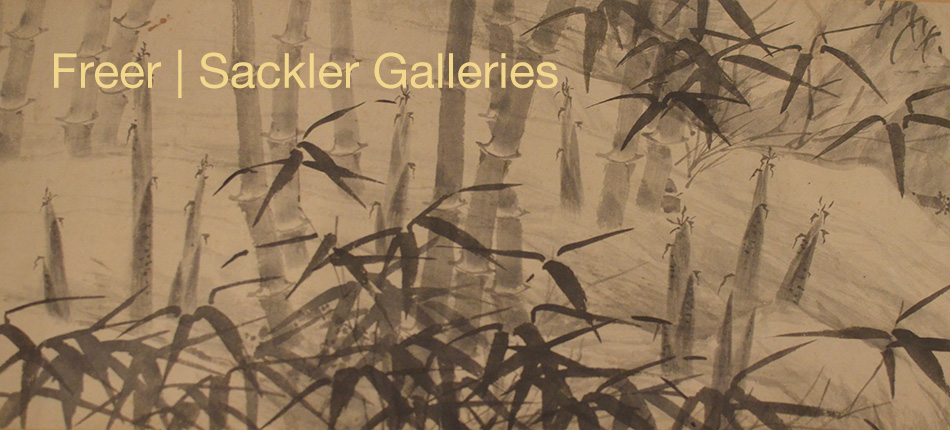
| In Oct. 2017 the Freer Gallery
of Art, one of the Smithsonian Institution's two Asian museums of
art, reopened
after nearly two years of renovations. One major objective was to
upgrade the climate control and humidity control systems for the
building, which opened in 1923. Coinciding with the
infrastructure renovations, curators took the opportunity to reenvision
"how the collections are exhibited, how the museum's
narrative is told, and how it relates to a 21st century
audience." Among the changes, labels describing objects are now
simplified, shortened and have catchy titles, key objects are
identified with red labels, and galleries are viewed as "thematic
min-exhibitions." The overhaul, led by outgoing director Julian
Raby highlights and gives fresh perspective on
the
gallery's many treasures. The galleries marked the re-opening
with a media preview on Oct. 11 and a two-day festival on Oct. 14-15. |
 |
 |
| The
Peacock
Room by James McNeil Whistler was originally done for
shipowner Frederick Leyland in London. Gallery founder Charles
Lang Freer, acquired it and moved it to his mansion in Detroit in 1904;
later it was moved to the gallery in Washington, DC. Visitors
will notice that the shelves which formerly held blue and white
porcelain, now hold vessels of many different textures and
colors.
Curators worked from black and white photographs to restock the shelves
as they were when the room was in Freer's home in the early 20th
century. |
 |
 |
|
|
 |
 |
 |
 |
| 1 of 2
> |
Freer Gallery of Art founder Charles Lang Freer was an industrialist who made his money manufacturing railcars in the late 1800s, and who amassed an art collection of more than 5,000 items. The gallery continues to build on the collection, and now has approximately 26,000 items. It is closely connected with the adjacent Arthur M. Sackler Gallery, which opened in 1987. The two galleries have a staff of 103 full-time employees and an annual budget of $33 million (FY2016). |
